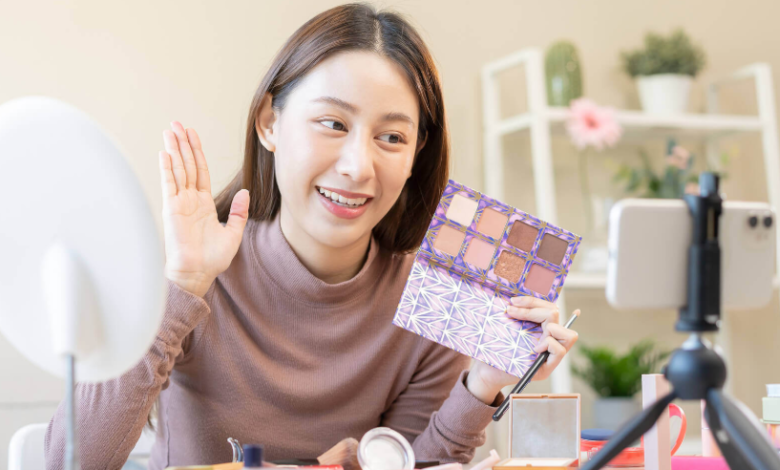Unlock Singapore’s Beauty Trends With SEO: A Step-by-Step Guide

Singapore’s beauty market is evolving faster than ever. From K-beauty skincare routines to cruelty-free cosmetics, consumers are constantly searching for the latest products and services. For beauty businesses, capturing this demand online requires more than just a stunning website—it requires smart, targeted beauty SEO. By understanding the trends and applying the right SEO strategies, you can ensure your brand reaches the right audience at the right time.
But how exactly can your beauty business tap into Singapore’s trends using SEO? This step-by-step guide will walk you through actionable strategies to boost visibility, attract local customers, and stay ahead in the competitive market.
Understanding Singapore’s Beauty Landscape
What Are the Current Trends?
The beauty industry in Singapore is highly dynamic. Consumers are leaning toward natural skincare, personalized beauty solutions, and innovative cosmetic technologies. Social media platforms, especially Instagram and TikTok, heavily influence buying decisions, making content-driven marketing critical.
Why SEO Matters in Trend Discovery
SEO allows your business to meet potential customers at the moment they’re searching for solutions. By targeting trend-related keywords and topics, your website can appear in search results for queries like “best hydrating serum Singapore” or “vegan lipstick online Singapore,” driving traffic from users already interested in what you offer.
Step 1: Identify Trend-Driven Keywords
How to Spot Trending Searches
Use tools like Google Trends, SEMrush, and Ahrefs to identify what beauty enthusiasts in Singapore are searching for. Focus on keywords with local intent and relevance, such as “facial spa near Marina Bay” or “organic skincare Singapore.”
Long-Tail Keywords for Higher Conversions
Long-tail keywords are more specific and tend to attract highly motivated users. For instance, instead of “facial,” use “anti-aging facial treatment Orchard Road.” These searches often indicate purchase intent, leading to better conversion rates.
Step 2: Optimize On-Page Content
Crafting Engaging Product and Service Pages
Each page of your website should clearly address user queries while naturally integrating keywords. Describe services, ingredients, or techniques in detail, and include authentic visuals or videos to enhance user experience.
Blogging Around Trends
Blogging is a key part of beauty SEO. Write posts that highlight trending topics such as “Top Skincare Routines in Singapore for 2025” or “How to Choose the Right Facial Based on Your Skin Type.” High-quality, informative content positions your brand as an authority and keeps visitors engaged.
Step 3: Leverage Local SEO
Google Business Optimization
Make sure your Google Business profile is complete and accurate. Include updated business hours, location, and high-quality images. Encourage clients to leave reviews—both quantity and quality of reviews improve local search rankings.
Hyper-Local Content
Target neighborhood-specific searches to reach the right audience. Examples include “Hair salon in Tanjong Pagar” or “Organic spa near Sentosa.” This approach ensures you capture local customers who are ready to visit or purchase.
See also: Why Your Pond Needs a Strong Pond Filter for Healthy Fish
Step 4: Improve Technical SEO
Mobile Optimization
Singaporean consumers are increasingly mobile-first. A responsive design and fast-loading pages are critical. Mobile optimization also boosts your SEO rankings, as Google prioritizes mobile-friendly websites.
Site Structure and Navigation
Ensure your website has clear navigation, intuitive menus, and well-structured URLs. A logical structure helps search engines index your pages efficiently and improves user experience.
Step 5: Build Authority and Trust
Social Proof and Reviews
Beauty brands thrive on trust. Display customer testimonials, before-and-after images, and video reviews to strengthen credibility. Positive reviews on Google and social media signal authority to both search engines and potential clients.
Collaborations and Influencer Partnerships
Partnering with local influencers or beauty experts can amplify reach. Collaborations generate backlinks and user engagement, which are vital for SEO and brand recognition.
Step 6: Monitor, Analyze, and Adjust
Tracking Key Metrics
Monitor traffic, keyword rankings, click-through rates, and conversions. Use tools like Google Analytics and Google Search Console to track performance and identify opportunities for improvement.
Continuous Optimization
Trends evolve rapidly, especially in the beauty industry. Update content regularly, refresh keywords, and adapt strategies to stay aligned with new consumer preferences.
Final Thoughts
Singapore’s beauty market offers incredible opportunities for brands willing to adapt to trends and optimize their online presence. By combining trend awareness with strategic SEO, your business can attract local customers, build trust, and establish itself as a leader in the industry. Partnering with a local expert like Authority Lighthouse gives beauty brands an added advantage—ensuring your SEO strategy stays relevant, data-driven, and aligned with how Singaporean consumers actually search.
Investing in beauty SEO is no longer optional—it’s the key to unlocking growth and visibility in 2025. With consistent implementation and the right guidance from a trusted agency like Authority Lighthouse, you’ll position your brand to thrive in Singapore’s competitive beauty scene.
FAQs
Q1: How can small beauty businesses in Singapore start with SEO?
A: Begin by optimizing your website for local keywords, creating trend-focused content, and maintaining an active Google Business profile.
Q2: Are beauty trends in Singapore different from global trends?
A: Yes, while some global trends influence Singapore, local preferences, climate, and lifestyle significantly affect what consumers search for.
Q3: How often should I update my content for SEO?
A: Aim to review and refresh content every 3–6 months, especially blog posts and service pages, to stay relevant to current trends.




